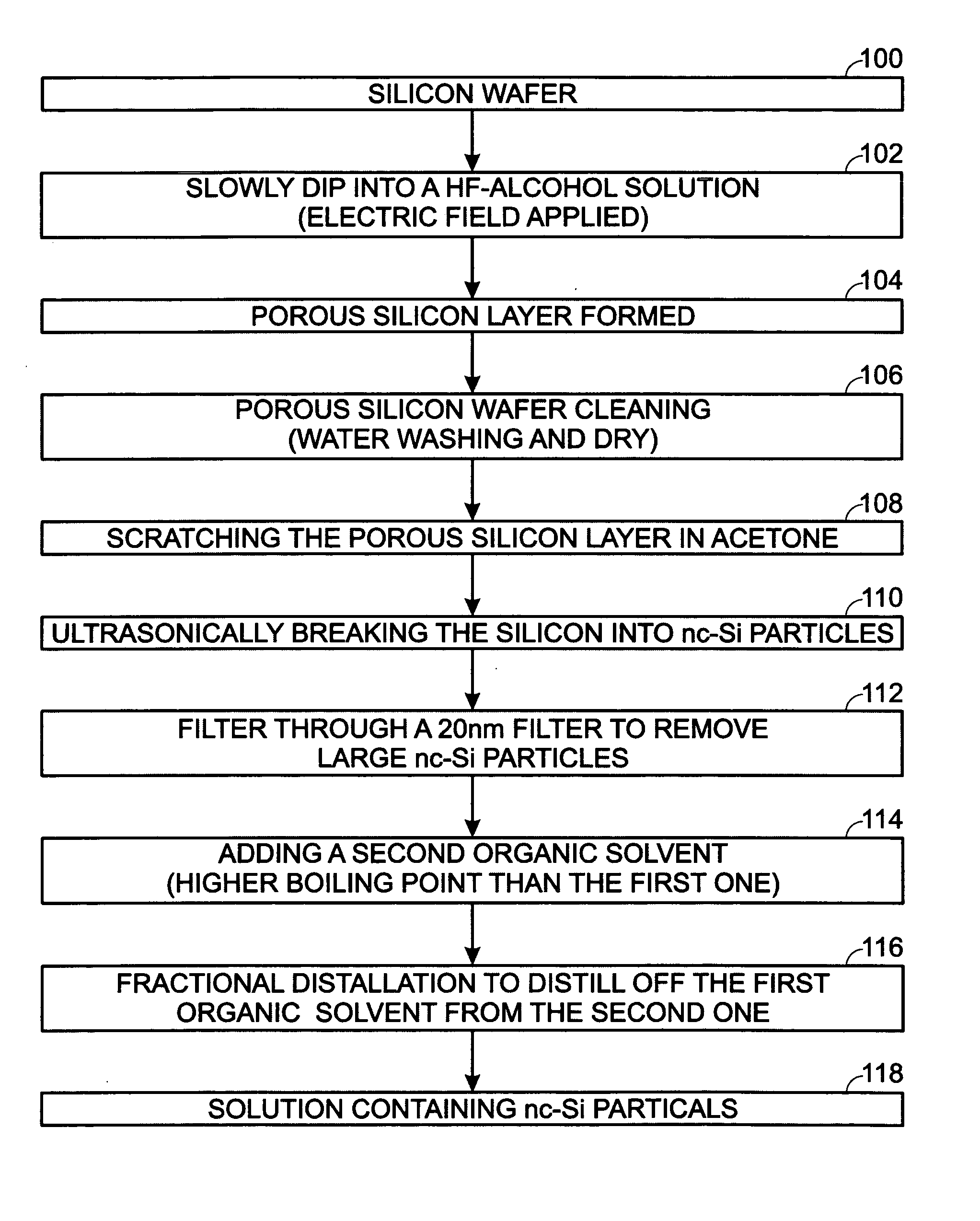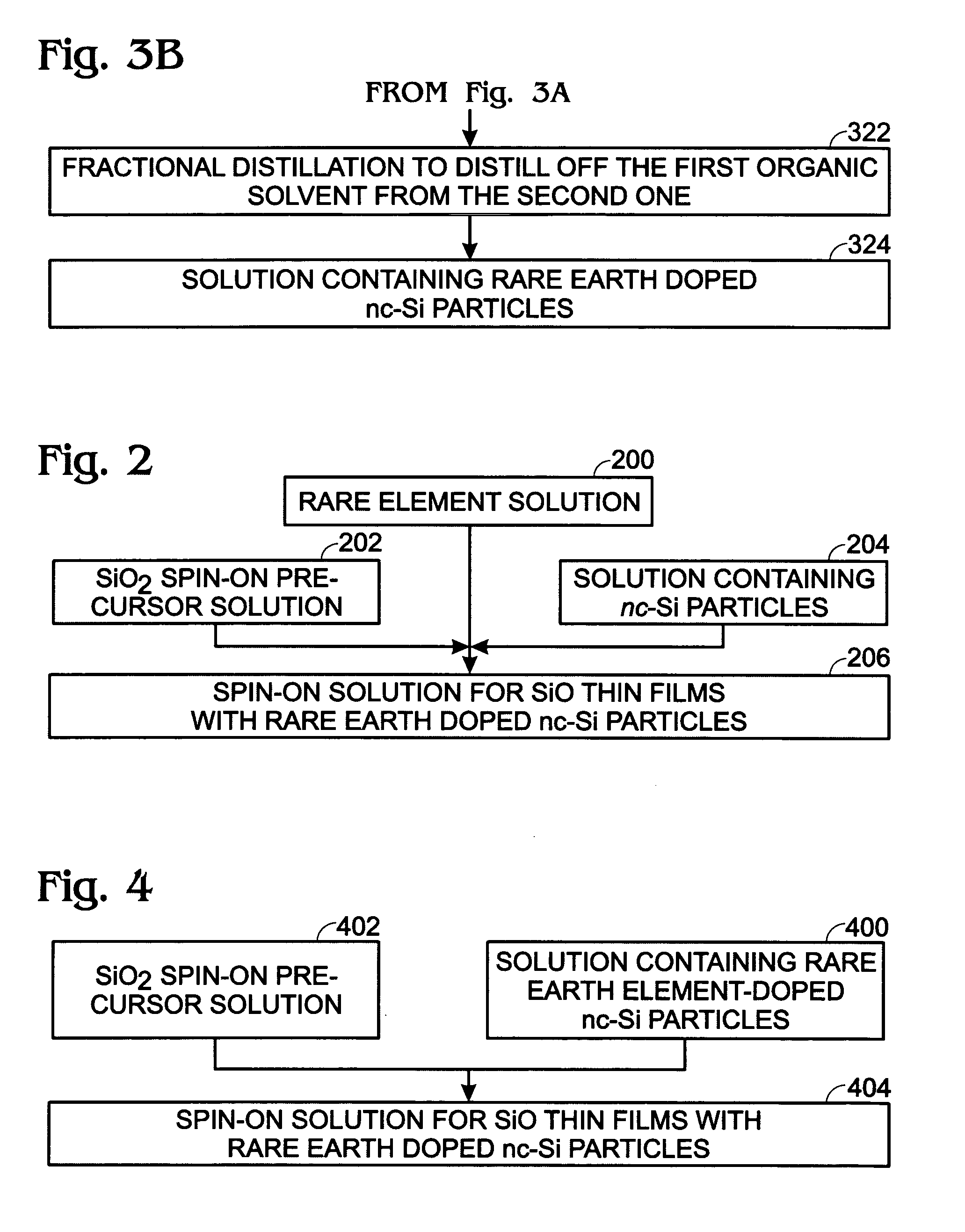Rare earth element-doped oxide precursor with silicon nanocrystals
a technology of rare earth elements and precursors, applied in semiconductor/solid-state device manufacturing, basic electric elements, electric devices, etc., can solve the problems of low device efficiency, increased cost, and insufficient interface engineering to support the use of rare earth element-doped oxide precursors, etc., to achieve the effect of reducing production costs
- Summary
- Abstract
- Description
- Claims
- Application Information
AI Technical Summary
Benefits of technology
Problems solved by technology
Method used
Image
Examples
Embodiment Construction
[0022]FIG. 1 is a diagram depicting a process for forming a nc Si solution. The synthesis of nc Si particles includes four basic steps. In the first basic step (Steps 100-108), a porous silicon layer is formed through an electrochemical etch process. The solution for the electrochemical process is the mixture of HF( about 49%) and alcohol, such as the methanol or ethanol. The porous silicon layer is formed by slowly immersing the wafer into the solution while keeping an electrical bias on the wafer. The thickness of the resulting porous silicon layer depends on the immersion speed, current density, solution concentration, and wafer properties.
[0023] The second step (Step 110) is the transfer of the porous silicon layer into an organic solvent. An ultrasonic treatment can be used in the step to separate the porous silicon layer from the wafer. The solvents used in this step include a strong polar organic solvent, such as acetone or tetrahydrofuran.
[0024] After transfer, the nc Si p...
PUM
| Property | Measurement | Unit |
|---|---|---|
| temperature | aaaaa | aaaaa |
| external quantum efficiency | aaaaa | aaaaa |
| boiling point | aaaaa | aaaaa |
Abstract
Description
Claims
Application Information
 Login to View More
Login to View More - R&D
- Intellectual Property
- Life Sciences
- Materials
- Tech Scout
- Unparalleled Data Quality
- Higher Quality Content
- 60% Fewer Hallucinations
Browse by: Latest US Patents, China's latest patents, Technical Efficacy Thesaurus, Application Domain, Technology Topic, Popular Technical Reports.
© 2025 PatSnap. All rights reserved.Legal|Privacy policy|Modern Slavery Act Transparency Statement|Sitemap|About US| Contact US: help@patsnap.com



